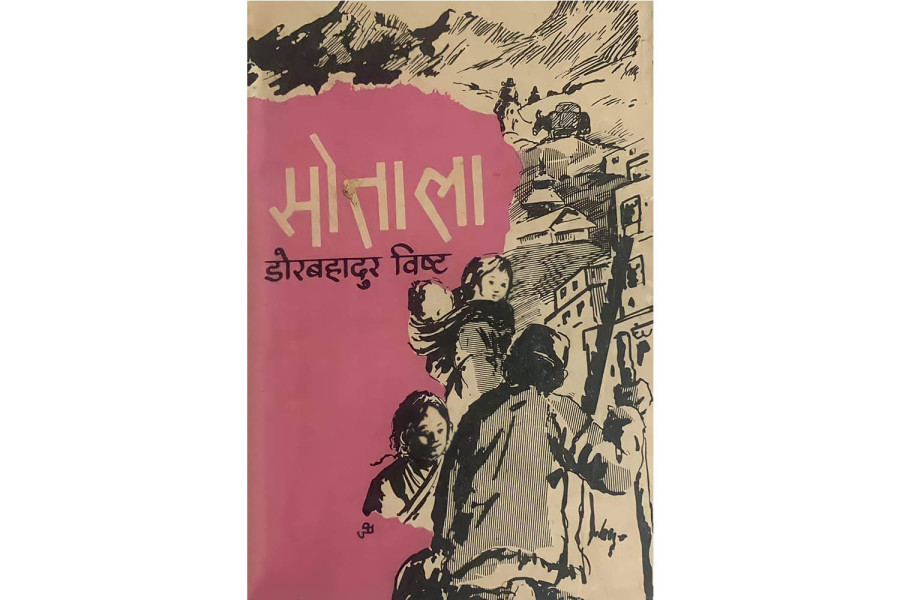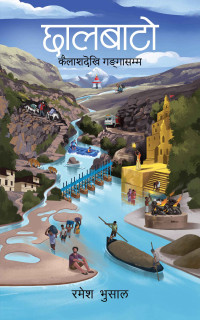Books
The enigma of the golden trails
In ‘Sotala’, Dor Bahadur Bista invites readers into an era when Nepalis’ quest for trade and glory led them across the Himalayan trails to Lhasa.
Nishant Pokharel
In the past, Nepali students did not dream of studying at prestigious American and European universities. People weren’t captivated by travelling across continents or romanticising life in Europe. Instead, they lined up along the trails of Kuti, drawn to the allure of Tibetan monasteries. Nepalis imagined Tibetan nymphs serving salted tea with cheerful smiles, embodying their aspirations.
It was a time when the elegance of men and women dressed in Kuchin robes and Chinese silk surpassed any modern luxury. Faith, trade, and fame converged in one place; for Nepalis, that place was Lhasa.
Dor Bahadur Bista's ‘Sotala’ is set in a distinct era when “all roads led north”. It was a time when the routes to Lhasa were bustling, with traders carrying their goods and dreams. The story is set in 18th-19th century Nepal and Tibet, a period when trade across the Himalayas was flourishing, Hindu and Buddhist cultures were intertwined, and the wealth of Nepalis was on the rise. Though short, the account is historical and fictional, blending imagination with truth. Bista's story goes beyond mere characters and events, exploring the rich historical, social, cultural, and political landscapes of the time.
Instead, ‘Sotala’ offers a broad commentary on the entire sociopolitical and cultural fabric of 18th-century Nepal Tibet. Like Émile Zola's ‘Germinal’ and Lisa See's ‘The Tea Girl of Hummingbird Lane’, Sotala enriches sociocultural commentary through its fictional settings. It presents compelling characters, engaging plots, and fascinating insights into anthropology, sociology, and philosophy, making it much more than just a work of literature.
This blend of elements is because Bista isn't just a literary figure; he is a renowned anthropologist. He is best known for his nonfiction works, such as ‘Fatalism’, ‘Development’, and ‘People of Nepal’, which brought him recognition outside the literary world. However, his talent extends beyond academia. In ‘Sotala’, readers can see how he applies his academic knowledge to craft a refined work of historical fiction.
The book draws from Bista's time as the Consul General in Tibet, where he gained extensive knowledge about Tibet and Nepal-Tibet relations. His insights are evident in his non-fiction work, ‘Reports from Lhasa’. As the Nepali consulate was the only foreign presence in the region, Bista had a unique opportunity to observe Tibetan culture closely. In a 1997 interview with Fisher, Bista described ‘Sotala’ as a distinctive blend of fiction and ethnography. He explained, "In a way, it's a novel, but at the same time, I included a lot of ethnographic material."
Further elaborating, Bista said, “If I had pursued anthropology further, I might have stopped creative writing. Conversely, if I hadn’t studied anthropology, I would have focused solely on creative writing. I became a blend of both, half this, half that.”
Sanuman, an honest and successful Nepali merchant living in Lhasa, narrates the story. Through his recollections, we are introduced to his past. As Sanuman reflects on his life, the events gradually unfold. He recalls his childhood in Jaisidewal, where he was once captivated by a girl from his neighbourhood. His mother was determined to make the girl her daughter-in-law. However, fate intervened when the son of the wealthy Tuladhar, who had made his fortune in Lhasa, abducted her. In Lhasa, Sanuman first encountered the unpredictable nature of life and fortune.
Unable to face the humiliation, Sanuman leaves home with dreams of Lhasa and limited finances. Various challenges mark his journey: sometimes, he is mistaken for a thief and detained by officials, and other times, he makes unfortunate mistakes. The story chronicles both his triumphs and misfortunes.
Sanuman begins his journey as a tradesman and a traveller with Sankhu Saau-an, a shrewd businessman trading in Lhasa. As his apprentice, Sanuman learns the trade secrets of Tibet. He follows Sankhu Saau-an’s example, eventually building his business empire. The narrative tracks Sanuman's transformation from a humble apprentice to a successful merchant and from a young bachelor to a proud father.
Following Sanuman’s journey, we are introduced to the everyday realities of that era. For instance, on his first trip to Lhasa, Sankhu Saau-an instructs Sanuman to deliver goods to the Nepali customs official's lodgings. In his naivety, Sanuman asks for payment for the merchandise. This action angers the official and teaches Sanuman a crucial lesson: success in trade requires more than just calculations; a merchant who couldn't master the art of bribery was doomed to fail.
The book also addresses political issues, cultural differences, and economic realities. It portrays the class system in Tibet and the exploitation of the peasantry during the oppressive Lamacracy. The struggles and hardships faced by the people are a central theme. Additionally, the book highlights the superstitious aspects of Tibetan society, such as the use of the Dalai Lama's urine as a potent medicine, showcasing the peculiarities of that culture. It contrasts Tibet's traditional customs and orthodoxy with Kolkata's role as a hub of innovation and progress.
The book effectively explains the trade practices of the time to illustrate this contrast. It describes how the old, challenging route through Kuti was eventually replaced by the more convenient and accessible Kalingpong route. The decline of Kathmandu's prominence favouring Kolkata and the subsequent decline of Nepali merchants are thoroughly examined. The book emphasises and masterfully chronicles this transformation, showing how traditional methods of trade and commerce evolved with the introduction of new tools and modern logistics.
While ‘Sotala’ offers a broad and engaging narrative, it has some literary flaws. The story begins with a single narrator but later shifts to multiple perspectives, confusing readers. The plot sometimes feels rushed; other times, it must be faster, with certain characters introduced but left underdeveloped. Additionally, frequent changes in setting and introducing new plotlines can further puzzle readers.
Despite these shortcomings, ‘Sotala’ compensates with its rich cultural, sociological, political, and anthropological context. It is more than just a work of fiction; it blends anthropology, ethnography, and sociology into a compelling fable, making it a valuable read.
Pokharel is a third-year BALLB student.
Sotala
Author: Dor Bahadur Bista
Publisher: Sajha Prakashan
Year: 1976




 7.12°C Kathmandu
7.12°C Kathmandu










